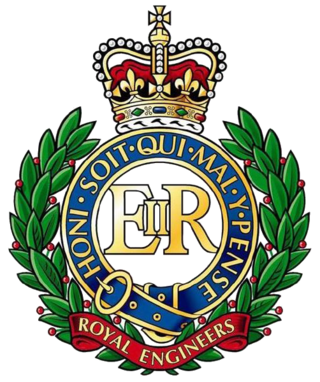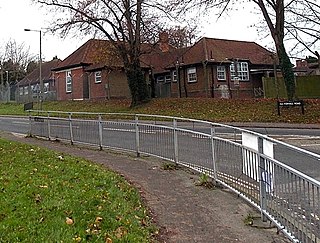This is the Operation Telic order of battle, which lists the British forces that took part in Operation Telic, including

The Royal Logistic Corps provides logistic support functions to the British Army. It is the largest Corps in the Army.

The Royal Corps of Signals is one of the combat support arms of the British Army. Signals units are among the first into action, providing the battlefield communications and information systems essential to all operations. Royal Signals units provide the full telecommunications infrastructure for the Army wherever they operate in the world. The Corps has its own engineers, logistics experts and systems operators to run radio and area networks in the field. It is responsible for installing, maintaining and operating all types of telecommunications equipment and information systems, providing command support to commanders and their headquarters, and conducting electronic warfare against enemy communications.
11 Explosive Ordnance Disposal and Search Regiment RLC is a specialist regiment of the British Army's Royal Logistic Corps (RLC) responsible for counter terrorist Explosive Ordnance Disposal (EOD), the safe recovery or disposal of conventional munitions. The regiment also has an ammunition inspectorate role supporting the Inspector Explosives (Army). With headquarters in Didcot, the regiment has sub units geographically based throughout the UK to provide a nationwide high readiness response capability in support of the police.
This is the Operation Herrick ground order of battle, which lists any British ground forces that have taken part in the duration of Operation Herrick between 2002 and 2014.

The 15 Field Squadron is a Field Squadron of the Royal Engineers a part of the British Army based in Wimbish.
The 6th Engineer Support Regiment is a specialised engineer regiment of the Australian Army. Established in early 2003, the regiment was formed by grouping several previously independent engineer squadrons – each providing different engineer support functions – together under a single headquarters. Headquartered at RAAF Base Amberley in Queensland, the regiment's sub-units are also based in Queensland.

35 Engineer Regiment (EOD&S) is an Explosive Ordnance Disposal and Search unit of the Royal Engineers within the British Army, under the operational command of 8th Engineer Brigade.

101 Engineer Regiment is a regiment of the British Army's Royal Engineers. Under Army 2020 Refine, the regiment moved from a hybrid regiment to a reserve EOD&S regiment with the regimental headquarters established in Catford. It is part of 29th Group, 8 Engineer Brigade. The Honorary Colonel of the regiment is Col Jools Holland.

Vauxhall Barracks is a British Army installation in Didcot, Oxfordshire. It is set to close in 2034.
33 Engineer Regiment (EOD&S) is a regiment of the British Army's Royal Engineers. It is based at Carver Barracks, Essex.

8th Engineer Brigade is an engineering support formation of the British Army, which forms part of 1st Division.

MoD Bicester is a large military installation consisting of two barracks and a storage and distribution centre, just outside Bicester in Oxfordshire. The St David's Barracks part of the base, home to 1 Regiment RLC, is set to close in 2028.

The structure of the British Army is being reorganised to the Future Soldier structure. The Army is commanded by the Chief of the General Staff (CGS), with Army Headquarters which is located in Andover, Hampshire. Subordinate to that post, there is a Commander Field Army, and a personnel and UK operations command, Home Command.
This is a list of units of the British Army's Royal Engineers.
The following is a hierarchical outline for the structure of the British Army in 1989. The most authoritative source for this type of information available is Ministry of Defence, Master Order of Battle, and United Kingdom Land Forces, HQ UKLF, UKLF ORBAT Review Action Plan, HQ UKLF, 1990.
73 Engineer Regiment was a Territorial regiment of the Royal Engineers, part of the British Army active from 1969 to 2014.

58 Field Squadron is currently an Explosive Ordnance Disposal (EOD) unit of the Royal Engineers (RE). In its long history its predecessors have fulfilled the roles of artisans, field engineers, chemical warfare specialists, and road builders. They saw active service on the Western Front in World War I and in the Battle of France and Burma Campaign during World War II. On two occasions, the unit's sappers were reputed to have repulsed enemy attacks at the point of the bayonet.
Future Soldier is a reform of the British Army resulting from the Integrated Review of Security, Defence, Development and Foreign Policy published in March 2021. The aim of the reform is to create a more lethal, agile and expeditionary force, able to fight and win wars and to operate in the grey-zone between peace and war. Future Soldier was published on 25 November 2021 and deals with the organizational changes of the British Army, with changes to personnel and equipment were set out in the Defence in a Competitive Age paper published on 22 March 2021.










